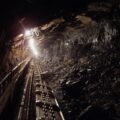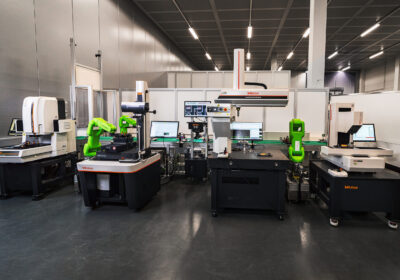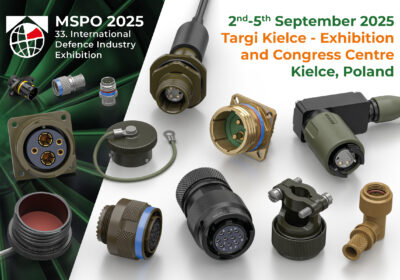Casper, Phillips & Associates Inc. (CP&A) is reaching out to trainee and experienced structural engineers who might not have considered what the crane industry has to offer.

Cranes typically require structural engineers to ensure the structure is robust enough for its service class; mechanical engineers to design the power transmission systems; and electrical engineers for controls and power. There is some overlap between disciplines. For example, mechanical engineers can be educated on both control theory and strength of materials.
Richard Phillips, mechanical engineer at CP&A, said: “There is a lot of potential in this industry for structural engineers. Cranes are complex structures and require a lot of interesting analysis.”
Their peers in mechanical engineering realize that, with good reason. Automated cranes are essentially giant robots and robotics is a hot topic in mechanical engineering. The kinetic architecture sector also requires mechanical engineers to keep stadium roofs and drawbridges moving, but the crane industry gets its fair share of this professional talent.
Think about the engineering required to put a floating crane system to work that can lift 3,500 metric tons — that’s just shy of eight million pounds. Container cranes are as prominent on many coastal city skylines as buildings and bridges, yet they often go unnoticed.
CP&A offers a wide variety of services, including specification, design, manufacturing review, modification, and accident investigation. Thusly, it is well placed to observe the scarcity of structural engineers, a specialty within civil engineering.
Take the crane bridge
“There is high competition for structural engineers,” said Phillips. “But the crane industry shouldn’t be overlooked. Cranes can be located in hurricane zones and high seismic zones; this means you get to practice and develop both of these skills. Cranes are often built at a manufacturing plant then transported to the installation site. For container cranes, they are often shipped on vessels in potentially rough seas. Analyzing a structure that is traveling across an ocean is not something every engineer gets to do.”

Phillips has highlighted engineers aspiring to work on, or already working with, bridges as being especially suited to raising their aspirations. After all, a crane boom acts as a bridge for the trolley to travel across to pick up the container from the vessel and take it to where it needs to go. Even for overhead cranes, the industry refers to part of the structure as the ‘bridge’. The trolley runs back and forth on the bridge, while it picks up and places loads.
Like bridges, crane engineering can take people places. Phillips said: “There is a lot of opportunity for travel in the crane industry. Cranes are located all around the world and as world-class engineers, our services are in demand globally. We currently have ongoing projects in Washington, California, Massachusetts, Delaware, New York, and Georgia. We also have projects in Indonesia, Canada, Germany, and Argentina. There is a consistent need for new ship-to-shore cranes, even as vessel sizes increase. The cranes need to be taller and have larger cantilevers.”
There are synergies between cranes and stadiums too — and there are a lot more cranes being built than retractable stadium roofs. Mobile stadium roofs require a rail system, and the specialist to calculate loads associated with motion of large structures. This may include the inertial effects of accelerating and decelerating. This infrastructure has a lot of motion cycles, so fatigue analysis starts to come into focus. These motion systems need to integrate with other types of engineers, such as mechanical and electrical.

The wider scope for engineering excellence within cranes must be seen to be believed, as the lack of civil engineers seems to bear out. CP&A has been utilizing nonlinear time history analysis (NLTHA) for research and engineering projects since 1991. Its crane base anti-seismic isolation system (BASIS), for ship-to-shore gantry cranes at the quayside, is built on NLTHA and can protect the crane main structure from damage even in contingency level earthquakes.
Phillips said: “These are very useful analysis tools to evaluate non-building structures that do not behave like buildings. Crane structures are unique, and the typical structural codes were not written with cranes in mind. This can result in interesting clauses applying that require application of advanced analysis techniques, such as non-linear time history. The genesis of the BASIS system was based on our experience with the seismic upgrade of Boeing Everett; after studying the problem we discovered friction dampers were the best solution.
“When you use dampers of any kind, this will create a non-linear response so typical seismic design procedures, such as a response spectrum based on the soil class and periods of vibration, are not always appropriate. This is where non-linear time history comes into play. These are called performance based design procedures.”
Lifting awareness
Global Lifting Awareness Day will shine a spotlight on education more intently than ever with its sixth staging later this year.
Powered by the Lifting Equipment Engineers Association (LEEA) and supporting organizations, it is now a widely celebrated day where manufacturers, suppliers, and end users are among those that share material that promotes safe and high-quality load lifting. Social media posts, videos, articles, and in-person activity will again be bound together by the hashtag, #GLAD2025.

Phillips said: “I think most people see cranes as something necessary to build important structures, but the focus stays on the end product and not the process to get there. The GLAD movement gives us a chance to help showcase what makes the crane industry so interesting. And we have much to build on. The entry level hires we’ve brought on board are as well prepared as any generation, and they take to our mentoring system. It’s just difficult to find the right engineers.
“From the outside looking in, it appears that the other industries are doing a better job at attracting students. Anecdotally, we aren’t seeing as many civil engineering graduates who focused on structures. Computer science and AI [artificial intelligence] are generating a lot of interest. Environmental and water resources management are both sub-disciplines under the civil engineering umbrella that tend to be attracting more students.”
If any trainee or experienced structural engineers are convinced, prepare to learn one’s crane vocabulary — and the rest will follow. While the design of cranes may have some unique characteristics and goals, the laws of physics don’t change. The fundamental approach to designing a structure will be more similar to other industries than it is different.
“The pinnacle of each engineer’s career is very personal, and each engineer will have a unique experience,” said Phillips. “Most engineers take great pride in handing over a custom crane design to a client. For me, that has been the biggest source of accomplishment and a very real symbol of the impact we make as engineers.
“Sometimes I have to take a minute and let it really sink in what I am designing. AI and computers are great at refining solutions to problems that have been previously solved. When you design a custom crane you are solving a new problem that potentially hasn’t been solved before. Computer programs are great at doing the routine busy work for us so that we can spend more of our budget on the cutting edge. Most projects are unique when we get involved.”








